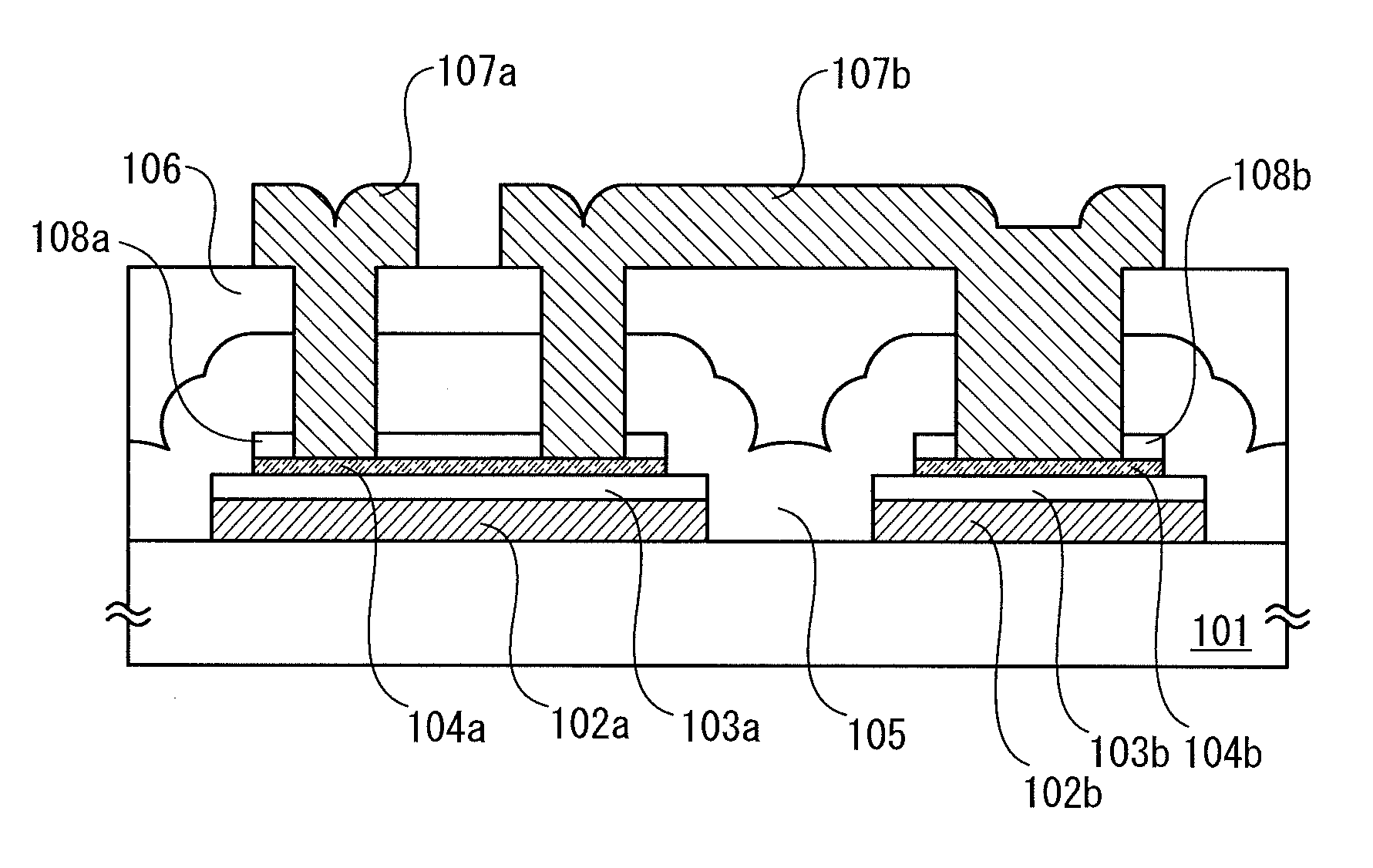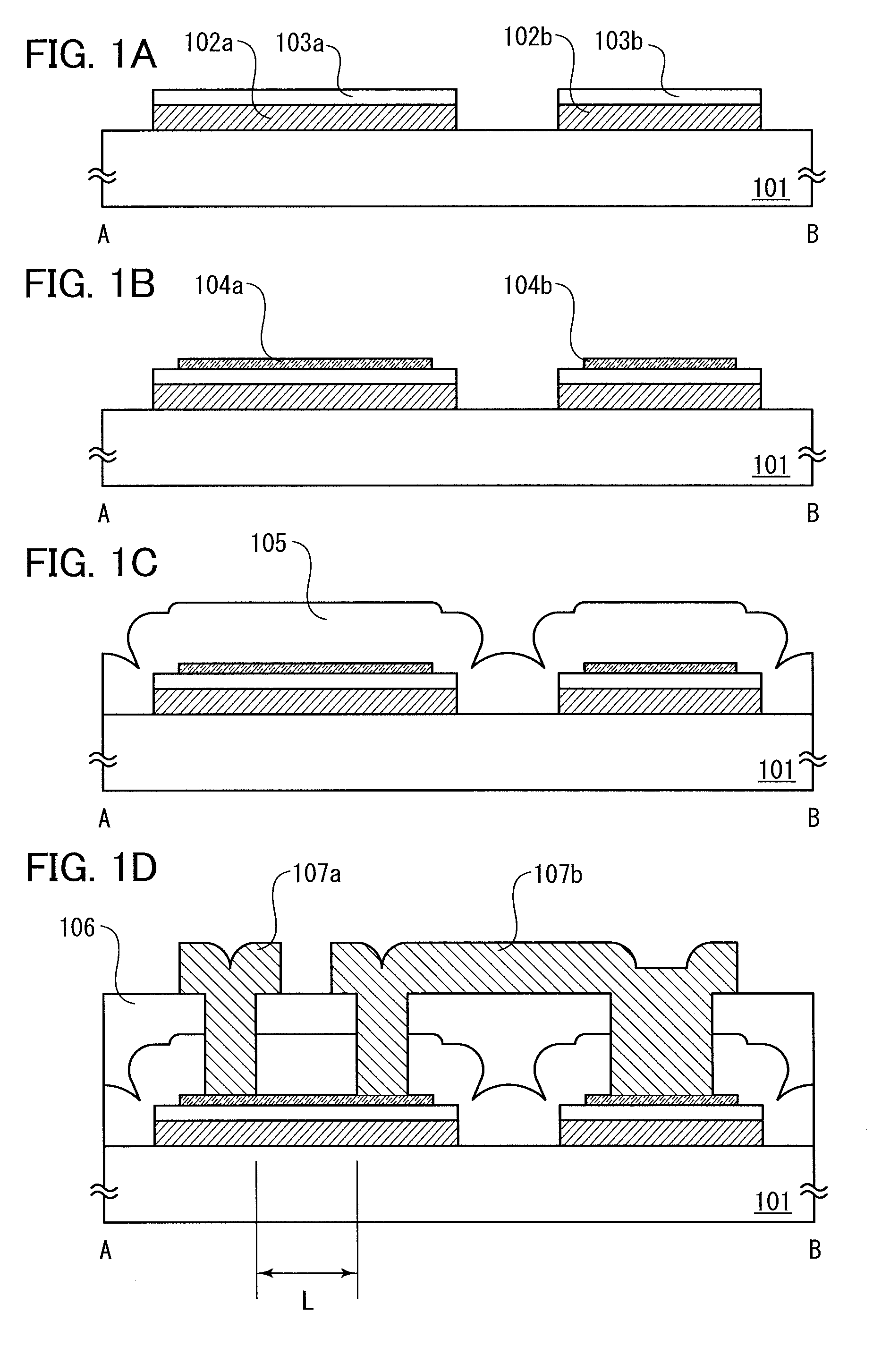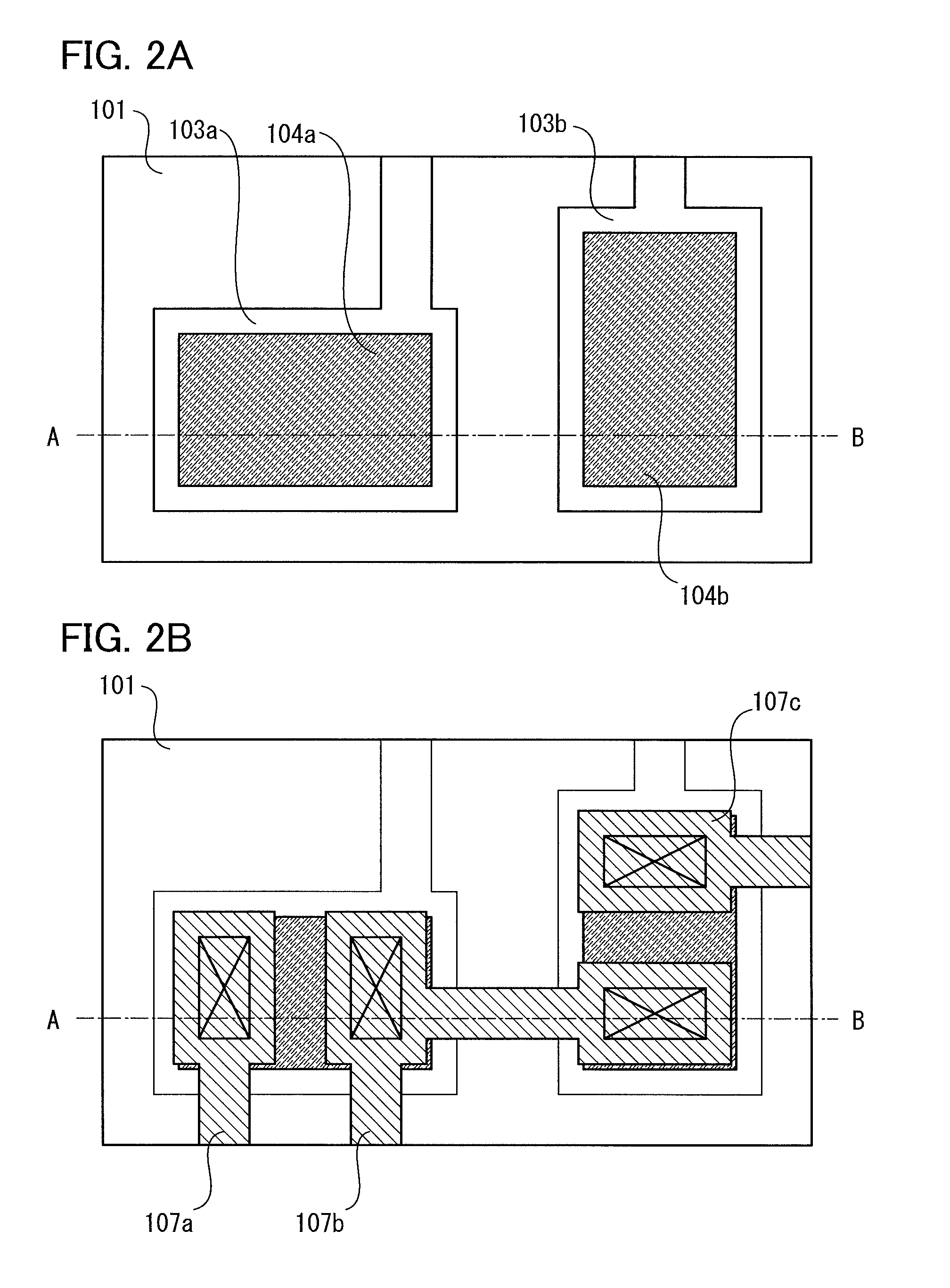Field effect transistor and method for manufacturing the same
a field effect transistor and transistor technology, applied in transistors, semiconductor devices, electrical equipment, etc., can solve the problems of insufficient resistance to voltage, method cannot be employed, and hydrogen that remained in this manner cannot be removed or removed in later steps
- Summary
- Abstract
- Description
- Claims
- Application Information
AI Technical Summary
Benefits of technology
Problems solved by technology
Method used
Image
Examples
embodiment 1
[0053]FIGS. 1A to 1D illustrate cross-sectional views of processes for manufacturing a FET which is one embodiment of the present invention and FIGS. 2A and 2B illustrate top views of the processes for manufacturing the FET which is one embodiment of the present invention. FIGS. 1A to 1D are cross sections along line A-B in FIGS. 2A and 2B.
[0054]First, a conductive layer and an insulating film are formed over a substrate 101. The conductive layer and the insulating film can be formed by applying any deposition method; however, it is preferable that a deposition method such as a sputtering method, a CVD method, or a laser ablation method, which is performed in a state where an atmosphere is sufficiently managed, be employed and that the insulating film be formed without exposure of the conductive layer to the air after formation of the conductive layer.
[0055]The conductive layer can be formed using any kind of materials. For example, for the conductive layer, any kind of metals such ...
embodiment 2
[0097]In this embodiment, an example of a FET having a structure different from that described in Embodiment 1 will be described. FETs illustrated in FIGS. 3A and 3B are each the same as the FET illustrated in FIG. 1D in that the FETs include, over the substrate 101, the wirings 102a and 102b each of which functions as a gate electrode; the insulating film 103a which is provided over the wiring 102a, has substantially the same shape as the wiring 102a, and functions as a gate insulating film; the insulating film 103b which is provided over the wiring 102b, has substantially the same shape as the wiring 102b, and functions as a gate insulating film; the semiconductor layer 104a which is provided over the insulating film 103a and whose edge is placed inside the edge of the insulating film 103a; the semiconductor layer 104b which is provided over the insulating film 103b and whose edge is placed inside the edge of the insulating film 103b; the oxide insulating layer 105; the planarizat...
embodiment 3
[0110]In this embodiment, an example of a FET having a structure different from those in Embodiments 1 and 2 and an active-matrix circuit including the FET will be described. An active-matrix circuit is a circuit in which unit circuits illustrated in FIG. 5A are arranged in matrix. The circuit in FIG. 5A is used in display devices in which grayscales are controlled by voltage, such as liquid crystal display devices. Note that in addition to the circuit in FIG. 5A, there are active-matrix circuits used for display devices in which grayscales are controlled by current, such as some electroluminescent display devices.
[0111]The circuit illustrated in FIG. 5A includes a FET 301 as a switching element; a display element 302 including a first electrode and a second electrode which face each other; a storage capacitor 303 including a first electrode and a second electrode which face each other; a scan line 304 which transmits a signal for selecting the FET 301; a data line 305 which transmi...
PUM
 Login to View More
Login to View More Abstract
Description
Claims
Application Information
 Login to View More
Login to View More - R&D
- Intellectual Property
- Life Sciences
- Materials
- Tech Scout
- Unparalleled Data Quality
- Higher Quality Content
- 60% Fewer Hallucinations
Browse by: Latest US Patents, China's latest patents, Technical Efficacy Thesaurus, Application Domain, Technology Topic, Popular Technical Reports.
© 2025 PatSnap. All rights reserved.Legal|Privacy policy|Modern Slavery Act Transparency Statement|Sitemap|About US| Contact US: help@patsnap.com



